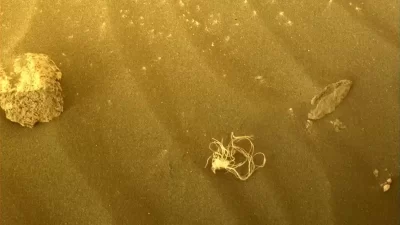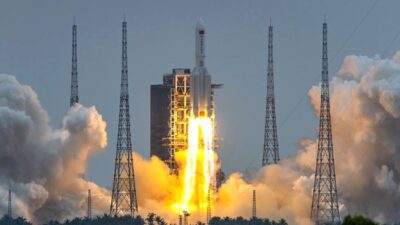According to a examine, the younger giraffe or foal wishes to increase its cappotential to transport quick on its legs as a way to keep away from predators. Animals’ spinal cords incorporate networks for coordinating their muscle mass after birth. It takes a while to emerge as talented in the right coordination of the tendons and muscle mass withinside the legs.
Infant animals depend considerably in the beginning on hardwired spinal twine reflexes. While nevertheless noticeably simpler, the animal’s motor manipulate reflexes allow it to stroll with out falling or injuring itself while it first tries.
The fearful gadget have to then steadily regulate to the younger animal’s leg muscle mass and tendons via workout with an increasing number of complicated and particular muscle manipulate. The juvenile animal can now hold up with the adults with out slipping out of manipulate.
The findings of the studies had been posted withinside the magazine Nature Machine Intelligence. Researchers on the Max Planck Institute for Intelligent Systems (MPI-IS) in Stuttgart carried out a studies examine to discover how animals research to stroll and research from stumbling. They constructed a four-legged, canine-sized robotic, that helped them discern out the details.
“As engineers and roboticists, we sought the solution via way of means of constructing a robotic that capabilities reflexes similar to an animal and learns from mistakes,” says Felix Ruppert, a former doctoral pupil withinside the Dynamic Locomotion studies institution at MPI-IS. “If an animal stumbles, is that a mistake? Not if it occurs once. But if it stumbles frequently, it offers us a degree of the way properly the robotic walks.”
Felix Ruppert is first writer of “Learning Plastic Matching of Robot Dynamics in Closed-loop Central Pattern Generators.”
Learning set of rules optimises digital spinal twine
After getting to know to stroll in only one hour, Ruppert’s robotic makes desirable use of its complicated leg mechanics. A Bayesian optimization set of rules courses the getting to know: the measured foot sensor records is matched with goal records from the modeled digital spinal twine strolling as a application withinside the robotic’s laptop. The robotic learns to stroll via way of means of constantly evaluating despatched and predicted sensor records, strolling reflex loops, and adapting its motor manipulate styles.
The getting to know set of rules adapts manipulate parameters of a Central Pattern Generator (CPG). In people and animals, those valuable sample mills are networks of neurons withinside the spinal twine that produce periodic muscle contractions with out enter from the brain.
Central sample generator networks resource the technology of rhythmic duties consisting of on foot, blinking or digestion. Furthermore, reflexes are involuntary motor manipulate moves prompted via way of means of hard-coded neural pathways that join sensors withinside the leg with the spinal twine.
As lengthy because the younger animal walks over a wonderfully flat surface, CPGs may be enough to manipulate the motion alerts from the spinal twine. A small bump at the ground, however, adjustments the walk. Reflexes kick in and regulate the motion styles to hold the animal from falling.
These non permanent adjustments withinside the motion alerts are reversible, or ‘elastic’, and the motion styles go back to their authentic configuration after the disturbance. But if the animal does now no longer forestall stumbling over many cycles of motion — in spite of energetic reflexes — then the motion styles have to be relearned and made ‘plastic’, i.e., irreversible.
In the new child animal, CPGs are to start with now no longer but adjusted properly sufficient and the animal stumbles around, each on even or choppy terrain. But the animal swiftly learns how its CPGs and reflexes manipulate leg muscle mass and tendons.
The equal holds proper for the Labrador-sized robotic-canine named “Morti.” Even extra, the robotic optimizes its motion styles quicker than an animal, in approximately one hour. Morti’s CPG is simulated on a small and light-weight laptop that controls the movement of the robotic’s legs. This digital spinal twine is positioned at the quadruped robotic’s lower back in which the pinnacle could be.
During the hour it takes for the robotic to stroll smoothly, sensor records from the robotic’s ft are constantly in comparison with the predicted touch-down expected via way of means of the robotic’s CPG. If the robotic stumbles, the getting to know set of rules adjustments how a ways the legs swing lower back and forth, how speedy the legs swing, and the way lengthy a leg is at the ground. The adjusted movement additionally influences how properly the robotic can make use of its compliant leg mechanics.
During the getting to know system, the CPG sends tailored motor alerts in order that the robotic henceforth stumbles much less and optimizes its on foot. In this framework, the digital spinal twine has no specific know-how approximately the robotic’s leg design, its vehicles and springs. Knowing not anything approximately the physics of the machine, it lacks a robotic ‘version’.
“Our robotic is practically ‘born’ understanding not anything approximately its leg anatomy or how they work,” Ruppert explains. “The CPG resembles a integrated automated on foot intelligence that nature gives and that we’ve got transferred to the robotic. The laptop produces alerts that manipulate the legs’ vehicles, and the robotic to start with walks and stumbles. Data flows lower back from the sensors to the digital spinal twine in which sensor and CPG records are in comparison.
If the sensor records does now no longer fit the predicted records, the getting to know set of rules adjustments the on foot behaviour till the robotic walks properly, and with out stumbling. Changing the CPG output at the same time as preserving reflexes energetic and tracking the robotic stumbling is a center a part of the getting to know system.”
Energy-green robotic canine manipulate
Morti’s laptop attracts handiest 5 watts of energy withinside the system of on foot. Industrial quadruped robots from outstanding manufacturers, that have discovered to run with the assist of complicated controllers, are plenty extra energy hungry. Their controllers are coded with the know-how of the robotic’s precise mass and frame geometry — the usage of a version of the robotic.
They commonly draw numerous tens, as much as numerous hundred watts of energy. Both robotic kinds run dynamically and efficiently, however the computational electricity intake is a ways decrease withinside the Stuttgart version. It additionally gives critical insights into animal anatomy.
“We cannot effortlessly studies the spinal twine of a residing animal. But we will version one withinside the robotic,” says Alexander Badri-Sprowitz, who co-authored the guide with Ruppert and heads the Dynamic Locomotion Research Group. “We recognise that those CPGs exist in lots of animals. We recognise that reflexes are embedded; however how are we able to integrate each in order that animals research actions with reflexes and CPGs? This is essential studies on the intersection among robotics and biology. The robot version offers us solutions to questions that biology on my own cannot answer.”









